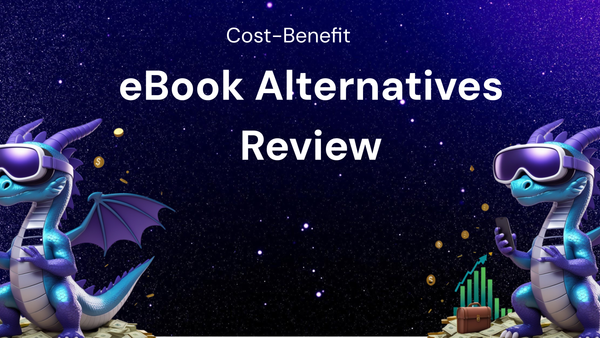Tracking Buyer Behavior Changes Driven by AI Tool Updates

Tracking Buyer Behavior Changes Driven by AI Tool Updates
Artificial intelligence (AI) is rapidly transforming the business landscape, and nowhere is this more evident than in the realm of sales and marketing. AI-powered tools are reshaping how businesses understand, engage with, and ultimately convert potential customers. As these tools become increasingly sophisticated and integrated into the buyer journey, tracking the resulting changes in buyer behavior is crucial for businesses to stay ahead of the curve, optimize their strategies, and maximize ROI.
This blog will delve into the complexities of tracking buyer behavior changes driven by AI tool updates. We will explore the key areas where AI is impacting buyer behavior, the metrics and methods for effectively tracking these changes, and the challenges and best practices associated with this critical endeavor.
I. The AI Revolution in Sales and Marketing: A Landscape Overview
Before diving into tracking buyer behavior, it's essential to understand the breadth and depth of AI's influence on sales and marketing. AI is no longer a futuristic concept; it's a present-day reality, powering a wide range of tools that are transforming how businesses operate. Some key areas of AI applications include:
- Personalized Marketing: AI algorithms analyze vast amounts of customer data to create personalized experiences. This includes tailored email campaigns, product recommendations, website content, and even real-time chatbots that answer individual queries.
- Lead Scoring and Prioritization: AI can analyze lead data from various sources to predict which leads are most likely to convert, enabling sales teams to prioritize their efforts and focus on high-potential prospects.
- Predictive Analytics: AI-powered predictive analytics can forecast future trends, identify potential opportunities, and anticipate customer needs, allowing businesses to proactively adapt their strategies.
- Sales Automation: AI automates repetitive tasks such as data entry, scheduling appointments, and sending follow-up emails, freeing up sales reps to focus on building relationships and closing deals.
- Chatbots and Virtual Assistants: AI-powered chatbots provide instant customer support, answer frequently asked questions, and guide prospects through the sales process.
- Content Optimization: AI can analyze content performance to identify areas for improvement, suggest relevant keywords, and even generate new content ideas.
- Social Listening: AI tools monitor social media channels to track brand mentions, identify customer sentiment, and gain insights into emerging trends.
- Customer Segmentation: AI algorithms can segment customers based on various factors such as demographics, behavior, and purchase history, enabling businesses to target specific groups with tailored messaging.
As these AI tools become more prevalent and sophisticated, they inevitably alter buyer behavior in significant ways.
II. Key Areas Where AI Impacts Buyer Behavior
AI is not just changing how businesses operate; it's fundamentally reshaping the buyer journey and influencing how potential customers interact with brands. Understanding these shifts is the first step towards effectively tracking them. Here are some key areas where AI is impacting buyer behavior:
- Increased Expectations for Personalization: Buyers have become accustomed to personalized experiences driven by AI. They expect brands to understand their individual needs and preferences and to provide relevant content and offers.
- Demand for Instant Gratification: AI-powered chatbots and virtual assistants provide instant support and answers, leading buyers to expect immediate responses to their inquiries. They are less likely to tolerate delays or generic replies.
- More Informed Decision-Making: Buyers have access to more information than ever before, thanks to AI-powered search engines, recommendation engines, and review platforms. They are more likely to conduct thorough research before making a purchase.
- Shorter Attention Spans: The constant stream of information and distractions online has led to shorter attention spans. Buyers are more likely to quickly dismiss content that is not immediately relevant or engaging.
- Greater Emphasis on Trust and Authenticity: In a world of AI-generated content and deepfakes, buyers are increasingly skeptical and place a greater emphasis on trust and authenticity. They are more likely to trust brands that are transparent and genuine.
- Increased Reliance on Online Reviews and Recommendations: Buyers rely heavily on online reviews and recommendations from other customers when making purchasing decisions. AI-powered review platforms can influence perceptions and drive sales.
- Change in Information Gathering: Buyers used to rely on static web pages and traditional marketing. AI is changing the information gathering process to dynamic content and interaction driven approaches that meet them where they are.
These changes in buyer behavior have profound implications for businesses. To succeed in this new environment, it's essential to understand how AI is impacting the buyer journey and to adapt strategies accordingly.
III. Metrics and Methods for Tracking Buyer Behavior Changes
Tracking buyer behavior changes driven by AI tool updates requires a multi-faceted approach that combines quantitative and qualitative data. Here are some key metrics and methods to consider:
- Website Analytics:
- Bounce Rate: A sudden increase in bounce rate after implementing an AI-powered chatbot could indicate that users are not finding the chatbot helpful or relevant.
- Time on Page: Tracking time on page can reveal whether AI-powered content recommendations are keeping users engaged.
- Conversion Rate: Monitoring conversion rates after implementing AI-driven personalization can show whether the personalization is effective in driving sales.
- Page Views per Session: Increased page views per session could indicate that AI-powered navigation and search are helping users find what they are looking for.
- Email Marketing Metrics:
- Open Rate: Tracking open rates after implementing AI-powered subject line optimization can reveal whether the AI is effectively capturing attention.
- Click-Through Rate (CTR): Monitoring CTR after implementing AI-driven email personalization can show whether the personalization is relevant and engaging.
- Unsubscribe Rate: A sudden increase in unsubscribe rate after implementing AI-driven email marketing could indicate that the AI is not targeting the right audience or is sending irrelevant content.
- Social Media Analytics:
- Engagement Rate: Tracking engagement rates (likes, shares, comments) after implementing AI-powered social media content generation can reveal whether the AI is creating compelling content.
- Sentiment Analysis: Monitoring sentiment analysis of brand mentions after implementing AI-powered social listening can show whether the AI is effectively managing brand reputation.
- Reach and Impressions: Tracking reach and impressions after implementing AI-powered social media advertising can show whether the AI is effectively targeting the right audience.
- Sales Data:
- Lead Conversion Rate: Monitoring lead conversion rates after implementing AI-powered lead scoring can show whether the AI is effectively identifying high-potential leads.
- Sales Cycle Length: Tracking sales cycle length after implementing AI-powered sales automation can reveal whether the AI is helping sales reps close deals faster.
- Average Deal Size: Monitoring average deal size after implementing AI-driven pricing optimization can show whether the AI is helping increase revenue.
- Customer Surveys and Feedback:
- Net Promoter Score (NPS): Measuring NPS after implementing AI-powered customer service can show whether the AI is improving customer satisfaction.
- Customer Satisfaction (CSAT) Scores: Tracking CSAT scores after implementing AI-powered personalization can reveal whether the personalization is meeting customer expectations.
- Open-Ended Feedback: Collecting open-ended feedback through surveys and interviews can provide valuable insights into how buyers are experiencing AI-driven interactions.
- A/B Testing:
- Compare AI-driven vs. non-AI-driven approaches: A/B testing different versions of websites, emails, or ads, one using AI-powered features and the other without, can provide direct evidence of the impact of AI on buyer behavior.
- User Behavior Analysis Tools (e.g., Heatmaps, Session Recordings):
- Understand how users interact with AI features: These tools can provide visual insights into how users are interacting with AI-powered features on websites and apps, revealing areas where users are getting stuck or confused.
By combining these metrics and methods, businesses can gain a comprehensive understanding of how AI is impacting buyer behavior and can use this knowledge to optimize their strategies.
IV. Challenges in Tracking Buyer Behavior Changes Driven by AI
Tracking buyer behavior changes driven by AI is not without its challenges. Here are some of the key obstacles:
- Attribution Complexity: It can be difficult to isolate the impact of AI from other factors that influence buyer behavior. Buyers interact with multiple touchpoints and channels, making it challenging to attribute specific outcomes to AI-driven initiatives.
- Data Silos: Data is often scattered across different systems and departments, making it difficult to get a holistic view of buyer behavior. Integrating data from various sources is essential for accurate tracking.
- Privacy Concerns: Collecting and analyzing buyer data raises privacy concerns. Businesses must comply with data privacy regulations such as GDPR and CCPA and be transparent with buyers about how their data is being used.
- Algorithmic Bias: AI algorithms can be biased if they are trained on biased data. This can lead to unfair or discriminatory outcomes and damage brand reputation. It's essential to ensure that AI algorithms are fair and unbiased.
- Lack of Expertise: Tracking buyer behavior changes driven by AI requires specialized skills and expertise. Many businesses lack the in-house talent needed to effectively track and analyze data.
- Rapidly Evolving Technology: The AI landscape is constantly evolving, with new tools and techniques emerging all the time. Businesses must stay up-to-date on the latest developments and adapt their tracking strategies accordingly.
- Defining a Baseline: Establishing a clear baseline of buyer behavior before implementing AI updates is critical for accurately measuring change. Without a clear "before" picture, it's difficult to determine the true impact of the AI.
V. Best Practices for Tracking Buyer Behavior Changes
To overcome these challenges and effectively track buyer behavior changes driven by AI, businesses should adopt the following best practices:
- Define Clear Objectives: Before implementing AI tools, define clear objectives and key performance indicators (KPIs) that will be used to measure success.
- Establish a Baseline: Establish a baseline of buyer behavior before implementing AI tools. This will provide a point of reference for measuring change.
- Integrate Data from Multiple Sources: Integrate data from various sources, including website analytics, email marketing platforms, social media platforms, and CRM systems.
- Use a Combination of Quantitative and Qualitative Data: Combine quantitative data (e.g., website traffic, conversion rates) with qualitative data (e.g., customer surveys, interviews) to get a complete picture of buyer behavior.
- Use A/B Testing: Use A/B testing to compare the performance of AI-driven approaches with traditional approaches.
- Monitor Data Privacy: Comply with data privacy regulations and be transparent with buyers about how their data is being used.
- Address Algorithmic Bias: Ensure that AI algorithms are fair and unbiased.
- Invest in Training and Expertise: Invest in training and expertise to ensure that your team has the skills needed to effectively track and analyze data.
- Stay Up-to-Date on the Latest Developments: Stay up-to-date on the latest developments in AI and adapt your tracking strategies accordingly.
- Regularly Review and Adjust Strategies: Buyer behavior changes are dynamic. Regularly review and adjust your strategies based on your findings.
- Focus on Ethical Considerations: Always prioritize ethical considerations when implementing and tracking AI-driven initiatives. Ensure that AI is used responsibly and does not exploit or harm buyers.
VI. Conclusion: Embracing the Future of Buyer Behavior Tracking
AI is transforming the business landscape, and tracking buyer behavior changes driven by AI is crucial for success. By understanding the key areas where AI impacts buyer behavior, utilizing the right metrics and methods, and addressing the challenges associated with tracking, businesses can gain a competitive edge and optimize their strategies for the future.
As AI continues to evolve, it's essential to embrace a proactive and adaptable approach to buyer behavior tracking. This means continuously monitoring the landscape, experimenting with new tools and techniques, and staying focused on delivering value to buyers. By doing so, businesses can harness the power of AI to build stronger relationships with their customers and drive sustainable growth. The key to success lies not just in implementing AI tools, but in understanding their impact and adapting to the evolving needs and expectations of the modern buyer.




